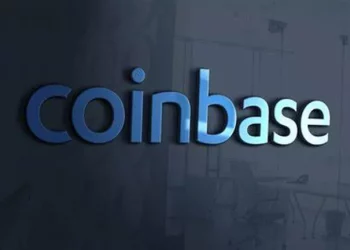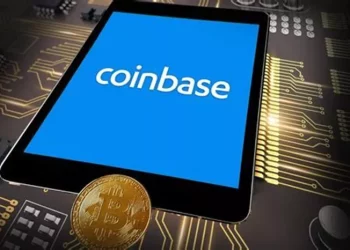Staking has become one of the most popular ways for cryptocurrency enthusiasts to earn rewards on their holdings. With the growing interest in staking, many platforms, such as Kraken, have introduced staking services to allow users to earn passive income. Kraken, a well-known cryptocurrency exchange, has been providing staking services for several years now, but with any platform, there are questions about its safety and reliability. Is it safe to stake on Kraken? This question has become increasingly important for users who are considering staking their digital assets and entrusting the platform with their funds.
In this article, we will explore the safety of staking on Kraken, discuss the factors that contribute to the platform’s security, and examine whether it provides the necessary protections for users. We will also look at Kraken’s reputation in the industry, its regulatory compliance, and the steps it takes to safeguard users’ funds. By the end of this article, you should have a clearer understanding of whether staking on Kraken is a safe and reliable choice.
What is Staking?
Before diving into the specifics of staking on Kraken, it’s essential to understand what staking is and how it works. Staking is the process of locking up a certain amount of cryptocurrency in a blockchain network to support its operations, such as transaction verification and network security. In return, users are rewarded with additional cryptocurrency, similar to earning interest on a savings account.
Staking is available on blockchains that use a Proof of Stake (PoS) consensus mechanism, where validators are chosen to create new blocks and confirm transactions based on the number of tokens they have staked. The more tokens you stake, the higher your chances of being selected as a validator. However, most individuals don’t actually perform the validation themselves; instead, they delegate their tokens to a staking pool (or a staking service) like Kraken, which then handles the technical aspects.
Kraken allows users to stake a variety of popular cryptocurrencies, including Ethereum 2.0 (ETH), Polkadot (DOT), Cardano (ADA), and many others. This gives users the opportunity to earn staking rewards without having to set up their own infrastructure. However, as with all investment and financial services, it’s crucial to evaluate the risks and the safety measures of the platform you choose.
The Importance of Security in Staking
Staking cryptocurrency inherently involves some risk. When you stake tokens, you are essentially locking them up in a contract with a network, and during this period, your funds are not as liquid as they would be if they were held in a regular wallet. Furthermore, staking typically requires you to trust a third party, such as an exchange, to manage your funds and participate in the network on your behalf.
When considering staking on any platform, including Kraken, security is one of the most critical factors to evaluate. The safety of your staked cryptocurrency will depend on the platform’s ability to protect your assets from theft, hacking, or mismanagement.
Here are the primary security risks involved in staking:
Hacking and Cybersecurity Attacks: Cryptocurrency exchanges are frequent targets for hackers. If an exchange is compromised, your funds could be stolen.
Platform Mismanagement: If the platform mismanages your staked funds or engages in unethical practices, you could lose your staked assets.
Network Risk: There is also the risk that the network you are staking on may have a vulnerability or may not perform as expected, impacting your rewards or staked assets.
Regulatory Risk: Changes in laws or regulations regarding cryptocurrency could affect the platform’s ability to operate or the way it handles your funds.
It’s important to understand how Kraken addresses these risks and whether it provides adequate protection for its users.
Kraken’s Reputation and History
Kraken is one of the oldest and most reputable cryptocurrency exchanges in the industry. Founded in 2011, it has built a strong reputation for being reliable, trustworthy, and secure. Kraken is widely recognized as a leading platform for buying, selling, and trading cryptocurrencies, and it offers a wide range of services, including staking, margin trading, and spot trading.
In terms of security, Kraken has consistently been praised for its commitment to protecting users’ funds. It is known for implementing robust security measures and is considered one of the more secure exchanges in the cryptocurrency space. Kraken has never experienced a major breach, and it offers features like two-factor authentication (2FA) and cold storage for funds.
Kraken also has a reputation for regulatory compliance. It has obtained licenses to operate in various regions, including the United States, Japan, and Europe. By complying with regulatory standards, Kraken demonstrates a commitment to maintaining a safe and legal environment for users, which can provide additional peace of mind.
Kraken’s Security Measures
Kraken takes several steps to ensure the safety of its users’ funds, including both its general security measures and those specific to staking. Some of the key security features include:
1. Cold Storage
One of the most significant security measures Kraken employs is the use of cold storage for the majority of users’ funds. Cold storage refers to keeping cryptocurrencies offline, which makes them much less vulnerable to online hacking attempts. Kraken stores approximately 95% of user funds in cold storage, ensuring that even if its servers are compromised, the vast majority of funds remain secure.
For users who want even more protection, Kraken offers a service called Kraken Vault, which allows for additional layers of security for their cryptocurrency holdings, such as multi-signature authentication and withdrawal limits.
2. Two-Factor Authentication (2FA)
To protect accounts from unauthorized access, Kraken requires users to enable two-factor authentication (2FA). 2FA adds an additional layer of security by requiring users to provide two forms of identification: something they know (password) and something they have (a time-sensitive code generated by an authenticator app or sent via SMS). This significantly reduces the risk of unauthorized access to your account, even if your password is compromised.
3. Encryption and Security Protocols
Kraken uses bank-grade encryption and secure socket layer (SSL) technology to protect users’ data during transactions and account management. This ensures that your personal information, including login credentials and transaction data, is kept safe from malicious actors.
4. Regular Audits and Transparency
Kraken conducts regular audits of its security protocols and infrastructure to identify any potential vulnerabilities and address them promptly. Transparency is another key factor in building trust with users, and Kraken makes an effort to be transparent about its security practices.
5. Insurance Fund for Staking Rewards
Kraken’s staking service includes an insurance fund that protects users in the event of slashing. Slashing refers to the penalty imposed on stakers who act maliciously or negligently within a Proof of Stake network. This can result in the loss of some of the staked funds. Kraken’s insurance fund helps mitigate this risk, offering users some protection if their assets are slashed while participating in staking.
How Kraken’s Staking Service Works
Kraken offers staking for a range of cryptocurrencies, allowing users to earn rewards by participating in the validation process of Proof of Stake networks. Some of the most popular coins available for staking on Kraken include Ethereum 2.0 (ETH), Polkadot (DOT), Cardano (ADA), and Tezos (XTZ). The process of staking on Kraken is simple, and users don’t need to set up their own validator node or deal with the technical aspects of staking.
Here’s how Kraken’s staking service works:
Choose a Cryptocurrency: Users can select from a variety of cryptocurrencies that are eligible for staking on Kraken. Each coin may have different staking rewards and terms, so it’s essential to research the specific staking details for each one.
Deposit Funds: Once you’ve chosen a cryptocurrency, you can deposit the funds into your Kraken account. Once the funds are available, you can choose to stake them through Kraken’s staking service.
Staking Rewards: Kraken pools the funds of multiple users and participates in the network’s staking process on their behalf. In return, users earn staking rewards, which are typically paid out in the same cryptocurrency. The rewards vary depending on the network and can be paid out daily, weekly, or on another regular basis.
Withdrawal: Users can withdraw their staked funds at any time. However, depending on the cryptocurrency, there may be certain lock-up periods or waiting times for withdrawals.
Kraken’s platform handles all the technical aspects of staking, making it easy for users to earn rewards without having to manage their own staking infrastructure.
Risks of Staking on Kraken
While Kraken takes significant measures to protect user funds, it’s important to be aware of the risks involved in staking:
Market Risk: Like all cryptocurrencies, the value of staked tokens can fluctuate significantly. If the market value of your staked assets drops, the rewards you earn may not offset the loss in value.
Slashing Risk: As mentioned earlier, certain Proof of Stake networks impose penalties (slashing) for malicious or negligent behavior by validators. Although Kraken offers an insurance fund to protect users from slashing, this does not eliminate the risk entirely.
Liquidity Risk: When you stake your tokens, they are often locked for a certain period, depending on the network and staking terms. This means that you may not be able to access your funds quickly in case of an emergency or if you want to sell them due to market changes.
Regulatory Risk: The cryptocurrency market is still evolving, and regulatory changes could impact Kraken’s ability to offer staking services or affect how it operates in certain jurisdictions.
Conclusion
Is it safe to stake on Kraken? The short answer is: Yes, Kraken is a safe and reliable platform for staking, thanks to its robust security measures, transparent practices, and long-standing reputation in the industry. Kraken has a strong track record of safeguarding user funds with features like cold storage, two-factor authentication, and encryption. Additionally, its insurance fund helps protect users from slashing penalties in some cases.
However, it is important to remember that all forms of cryptocurrency investment come with inherent risks. Staking, in particular, exposes users to market fluctuations, liquidity risks, and the potential for slashing penalties. Therefore, users should carefully consider the risks before committing to staking, conduct their own research, and be aware of the terms and conditions for each staking opportunity on Kraken.
Ultimately, Kraken is considered one of the more secure and reputable exchanges for staking, but users should always take steps to protect their own accounts, such as enabling 2FA, using strong passwords, and withdrawing large amounts of funds to cold storage if desired.
By understanding the risks and the protections Kraken offers, users can make informed decisions and enjoy the potential rewards of staking in a secure and trusted environment.
Related topics:

















